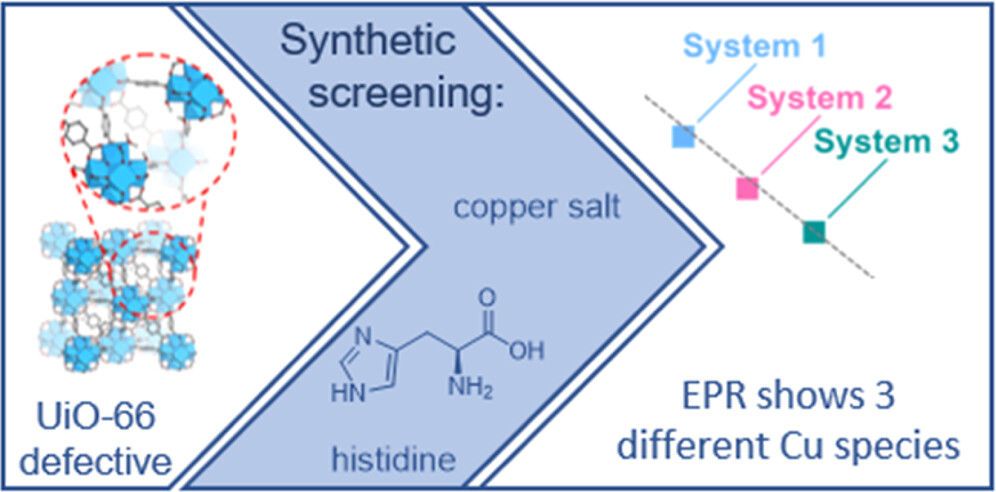Chemistry of Materials -Erlend Aunan, Isabelle Gerz, Karl P. Lillerud, Serena DeBeer and Unni Olsbye.

Bioinspired design of catalysts aims to harness natural motifs observed in enzymatic systems to develop more efficient catalysts for industrial applications. One particularly inspiring group of enzymes─monooxygenases─demonstrate the highly efficient partial oxidations of substrates, such as the conversion of methane to methanol, a process that is highly sought after in industrial chemistry. In this study, we explore the use of zirconium-based metal–organic framework UiO-66, synthesized with open zirconium sites, to support copper–histidine complexes of varying geometries and speciation. Through the application of EPR spectroscopy, we identified three distinct copper species within the framework. The mole fractions of these copper species varied depending on the histidine loading, suggesting a tunable system with potential implications for catalytic performance. Without histidine loading, copper was found to bind scarcely to the defective site. With histidine, however, copper retention was improved. Two different species formed, of which one resembles the pMMO CuB site. Our findings lay the groundwork for further exploration and development of advanced catalysts using bioinspired design and cutting-edge MOF-characterization techniques.
Click here for the complete article!